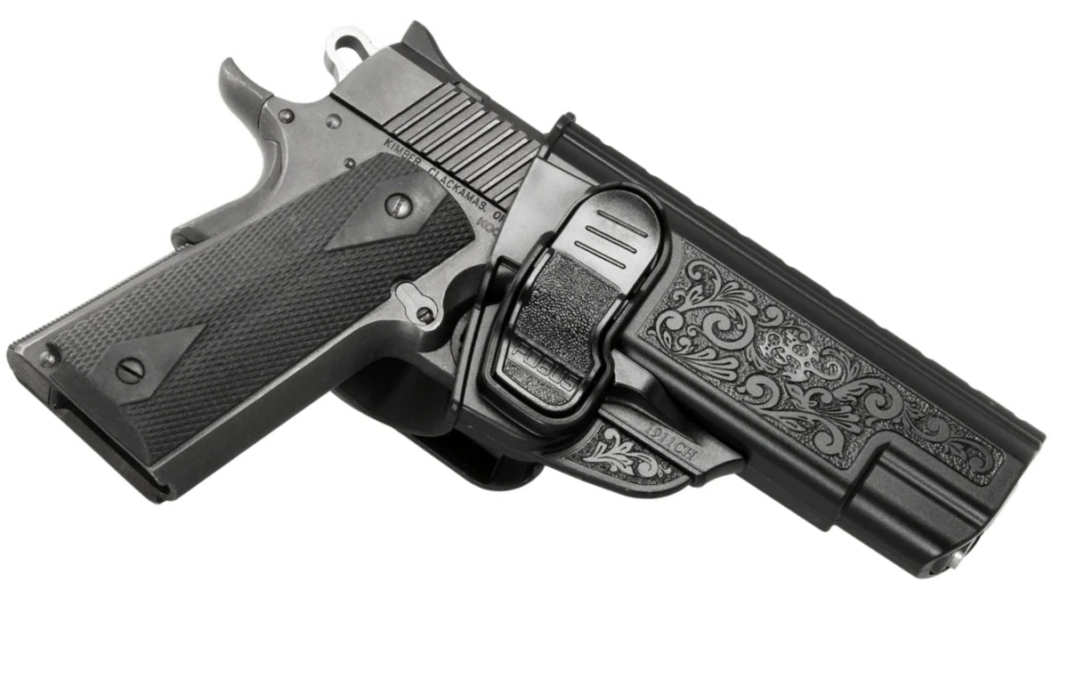The 1911 pistol is a timeless firearm known for its reliability, precision, and classic design. Whether used for self-defense, competition shooting, or everyday carry, finding the right holster for your 1911 is essential for comfort, safety, and accessibility. A poorly chosen holster can lead to discomfort, slow draw times, and even damage to your firearm.
With so many options available, selecting the best holster for a 1911 can feel overwhelming. Understanding the different types, materials, and key features will help you make an informed decision.
Key Factors to Consider When Choosing a 1911 Holster
Carry Position and Comfort
Your preferred carry position plays a major role in determining the right holster for your needs. Some of the most common carry positions include:
- Inside-the-waistband (IWB): Offers concealment by keeping the firearm close to the body but may require a larger waistband size for comfort.
- Outside-the-waistband (OWB): Provides easier access and greater comfort but may require a jacket or loose clothing for concealment.
- Shoulder holster: A good option for those who prefer carrying off the waistband, ideal for seated positions or colder climates.
- Appendix carry: Positioned in the front of the waistband, allowing for quick access but requiring a well-designed holster to avoid discomfort.
Retention and Security
A good 1911 45 holster should hold the firearm securely without making it difficult to draw when needed. Holsters come with different levels of retention:
- Passive retention: Relies on a snug fit and friction to keep the firearm in place. Many leather holsters and Kydex holsters use this method.
- Active retention: Uses additional mechanisms, such as thumb breaks or locking systems, to secure the firearm. These are common in duty and tactical holsters.
For concealed carry, a balance between retention and accessibility is crucial to ensure that the firearm stays in place while allowing for a quick and smooth draw.
Material Options: Leather, Kydex, and Hybrid
Holster material affects comfort, durability, and retention. The most common materials include:
- Leather: Traditional, durable, and comfortable over time. Leather holsters mold to the firearm for a custom fit but may require a break-in period.
- Kydex: A rigid polymer that offers excellent retention and durability. Kydex holsters maintain their shape over time and allow for a consistent draw.
- Hybrid: Combines materials like Kydex and leather for a balance of comfort and retention. Hybrid holsters often have a Kydex shell with a leather or padded backplate for comfort.
Each material has its advantages, so the best choice depends on personal preference and intended use.
Best Types of Holsters for a 1911
Inside-the-Waistband (IWB) Holsters
IWB holsters are popular for concealed carry due to their ability to keep the firearm close to the body. They provide good concealment, especially when worn with a sturdy belt and proper clothing. When choosing an IWB holster for a 1911, consider factors such as:
- Sweat guards to protect the firearm from moisture
- Adjustable cant for personalized draw angles
- Comfort, as 1911 pistols are larger and may require extra padding
Outside-the-Waistband (OWB) Holsters
OWB holsters are widely used for open carry, range shooting, and competition. They provide easy access and comfort, making them a great choice for those who do not need deep concealment. Some key considerations include:
- Belt loops or paddle attachments for secure positioning
- Retention levels for added security
- High-ride designs for better concealment under a jacket or loose clothing
Shoulder Holsters
Shoulder holsters are excellent for carrying a 1911 in colder weather or when sitting for extended periods. They distribute weight across the shoulders and allow for cross-draw access. When selecting a shoulder holster, consider:
- Adjustable straps for a comfortable fit
- Balance between the firearm and spare magazine pouches
- Leather or nylon options based on durability and comfort preferences
Conclusion
Finding the best colt 1911 holster depends on individual needs, preferred carry style, and intended use. Whether choosing an IWB holster for everyday carry, an OWB holster for open carry, or a tactical holster for duty use, key factors such as material, retention, and comfort should guide the decision.
Investing in a high-quality holster ensures both safety and accessibility, making carrying a 1911 more secure and convenient. By considering these factors, firearm owners can select the ideal holster to complement their 1911 while maintaining comfort and functionality.







